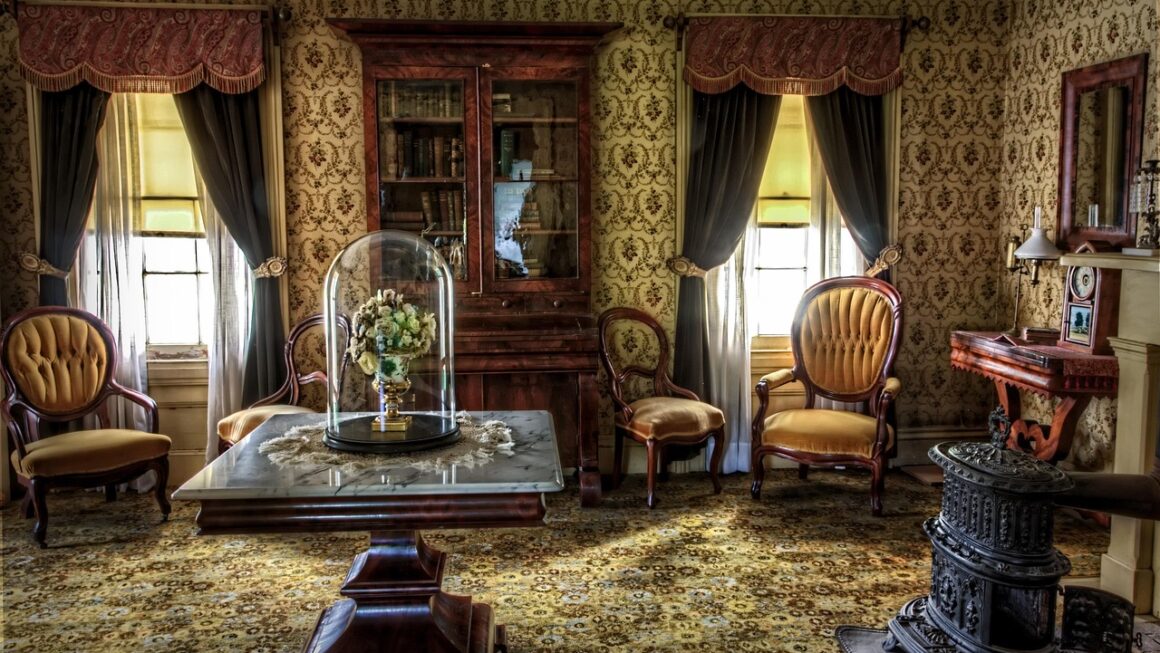Smart bulbs have revolutionized the way we illuminate our homes, offering far more than just on and off functionality. They bring a world of customization, convenience, and energy efficiency right to your fingertips, allowing you to personalize your lighting experience like never before. From setting the perfect mood for a relaxing evening to automating your home’s security, smart bulbs are transforming the humble light bulb into a powerful tool. Let’s dive into the world of smart bulbs and explore their benefits, features, and how they can enhance your living space.
Understanding Smart Bulbs: More Than Just Light
What Makes a Bulb “Smart”?
Smart bulbs differ from traditional light bulbs in several key ways. They contain integrated technology that allows them to connect to your home’s Wi-Fi network or other smart home hubs, enabling remote control and advanced features. Unlike traditional bulbs, smart bulbs communicate!
- Connectivity: Smart bulbs connect to your home network, usually via Wi-Fi or Bluetooth. Some use Zigbee or Z-Wave protocols, requiring a compatible hub.
- Control: You can control smart bulbs using a smartphone app, voice assistants (like Amazon Alexa or Google Assistant), or even smart switches.
- Customization: Adjust brightness, color temperature (warm to cool white), and even color (RGB) with compatible bulbs.
- Automation: Schedule lights to turn on/off at specific times, dim gradually, or respond to triggers from other smart devices.
Types of Smart Bulbs
There are various types of smart bulbs available, each with its own set of features and functionalities. Choosing the right type depends on your specific needs and preferences.
- White Smart Bulbs: Offer adjustable brightness and color temperature (warm to cool white). Ideal for general lighting and creating different moods. A warm white is great for evenings while a cool white is better for task lighting.
- Color Smart Bulbs: In addition to adjustable brightness and color temperature, these bulbs can produce a vast array of colors. Perfect for creating vibrant ambiance or setting the mood for parties. They are typically more expensive than white smart bulbs.
- Filament Smart Bulbs: Designed to mimic the look of traditional Edison-style bulbs, while offering smart control. A stylish option for vintage-inspired fixtures.
- Specialty Smart Bulbs: Including bulbs for specific applications, such as outdoor lighting, recessed lighting, or even candelabra-style fixtures.
The Benefits of Switching to Smart Lighting
Energy Efficiency and Cost Savings
Smart bulbs can significantly reduce energy consumption compared to traditional incandescent bulbs, leading to cost savings on your electricity bill.
- LED Technology: Most smart bulbs use LED technology, which is far more energy-efficient than incandescent or even halogen bulbs. LEDs use up to 75% less energy and last much longer.
- Scheduled Usage: Automate your lights to turn off when not needed, preventing wasted energy. For example, you can schedule outdoor lights to turn on only after sunset and turn off at sunrise.
- Dimming Capabilities: Lowering the brightness of a smart bulb not only creates a more relaxed ambiance but also reduces energy consumption.
Enhanced Convenience and Control
Smart bulbs offer unparalleled convenience and control over your home lighting, making your life easier and more comfortable.
- Remote Control: Control your lights from anywhere using your smartphone app. Turn lights on/off when you’re away from home to deter burglars or to ensure you never come home to a dark house.
- Voice Control: Integrate your smart bulbs with voice assistants like Amazon Alexa, Google Assistant, or Apple Siri for hands-free control. Imagine turning off all the lights with a simple voice command before going to bed.
- Customizable Schedules: Set up schedules to automate your lighting based on your daily routine. For example, program your bedroom lights to gradually brighten in the morning to wake you up gently.
Creating the Perfect Ambiance
Smart bulbs allow you to create the perfect ambiance for any occasion, transforming your living space into a personalized haven.
- Adjustable Brightness and Color Temperature: Fine-tune the brightness and color temperature to create the desired mood. Use warm, dim lighting for relaxing evenings and bright, cool lighting for tasks that require focus.
- Color Customization: With color smart bulbs, you can choose from millions of colors to create vibrant and immersive lighting experiences. Set the mood for a party, create a cozy atmosphere, or even match the lighting to your favorite team’s colors.
- Scene Creation: Group multiple smart bulbs together and create custom scenes for different activities. For example, a “Movie Night” scene could dim the lights and set a relaxing color, while a “Reading” scene could provide bright, focused lighting.
Choosing the Right Smart Bulbs for Your Needs
Compatibility with Your Smart Home Ecosystem
Before purchasing smart bulbs, ensure they are compatible with your existing smart home ecosystem.
- Wi-Fi vs. Hub-Based: Consider whether you prefer Wi-Fi-enabled bulbs (which connect directly to your router) or hub-based bulbs (which require a separate hub to communicate). Wi-Fi bulbs are simpler to set up but can strain your router if you have many devices. Hub-based systems like Zigbee and Z-Wave often offer better range and reliability.
- Voice Assistant Integration: Check if the bulbs are compatible with your preferred voice assistant (Amazon Alexa, Google Assistant, or Apple Siri). Most popular smart bulb brands offer integrations with multiple voice assistants.
- Smart Home Platform Compatibility: If you use a specific smart home platform (like Samsung SmartThings or Apple HomeKit), ensure the bulbs are compatible with that platform.
Considering Features and Functionality
Think about the features and functionalities that are most important to you.
- Brightness (Lumens): Choose a bulb with the appropriate brightness for the room you intend to use it in. A living room might require brighter lights than a bedroom.
- Color Temperature (Kelvin): Decide whether you prefer warm white (around 2700K), cool white (around 5000K), or daylight (around 6500K) lighting.
- Color Capabilities (RGB): If you want to create colorful lighting effects, opt for color smart bulbs.
- Lifespan: Check the estimated lifespan of the bulbs to ensure they will last for a reasonable amount of time. LED bulbs typically have a much longer lifespan than traditional bulbs.
Reading Reviews and Comparing Brands
Do your research and read reviews from other customers before making a purchase.
- Online Reviews: Look for reviews on websites like Amazon, CNET, and Wirecutter to get an unbiased opinion on the performance and reliability of different smart bulb brands.
- Brand Reputation: Consider the reputation of the brand. Established brands like Philips Hue, LIFX, and Sengled are generally considered to be more reliable than lesser-known brands.
- Price Comparison: Compare prices from different retailers to ensure you’re getting the best deal. Keep in mind that higher-priced bulbs often offer more features and better performance.
Setting Up and Troubleshooting Smart Bulbs
Initial Setup and Configuration
Setting up smart bulbs is generally a straightforward process, but it’s important to follow the instructions carefully.
- Download the App: Download the manufacturer’s app for your smart bulbs to your smartphone.
- Connect to Your Wi-Fi Network: Follow the app’s instructions to connect the bulbs to your home Wi-Fi network. For hub-based systems, you’ll need to connect the hub to your router first.
- Pair the Bulbs: Pair the bulbs with the app and assign them to specific rooms or zones.
- Customize Settings: Customize the brightness, color temperature, and other settings to your liking.
Common Troubleshooting Issues
Sometimes, you may encounter issues with your smart bulbs. Here are some common problems and how to fix them:
- Bulb Won’t Connect to Wi-Fi: Ensure your Wi-Fi network is working properly and that the bulb is within range of your router. Try resetting the bulb by turning it off and on several times.
- Bulb Not Responding: Check that the bulb is properly screwed into the socket and that the switch is turned on. Make sure the bulb is still connected to your Wi-Fi network.
- Voice Control Not Working: Verify that your voice assistant is properly configured and that it is connected to your smart bulb system.
- App Issues: Restart the app or try reinstalling it. Make sure the app is up to date.
Conclusion
Smart bulbs offer a compelling blend of energy efficiency, convenience, and customization, making them a worthwhile investment for any homeowner. By understanding the different types of smart bulbs, their benefits, and how to choose the right ones for your needs, you can transform your home lighting into a smart, efficient, and personalized experience. Embrace the future of lighting and unlock the full potential of your living space with smart bulbs! They aren’t just bulbs; they are smart home enablers.




